Review for Ghost In The Shell: The New Movie
Introduction
I feel I should begin by flagging up a potential problem with releasing Ghost in the Shell: The New Movie at this time. It’s the follow up to the Ghost in the Shell: Arise series that has been released here in OVA form the last couple of years, which take us back to a time before Section 9, before Major Motoko Kusanagi had put together her team. The series began when she left the military, and followed her as she encountered the future Section 9 team members, as she investigated a series of cybercrimes. The whole of the Arise project has been leading up to that point where the team is formed and it becomes part of Section 9, and that is where we are with the movie. The problem is that we haven’t seen it all in the UK. We got the Borders OVAs, which were initially released theatrically in Japan, 4 episodes. But in Japan, the OVAs were reworked into a television series, edited down into half hour episodes, two per story. But for this Alternative Architecture television series, two more episodes were created, essentially a fifth Border, called Pyrophoric Cult. This story bridges the gap between Arise and the movie; it leads into the movie as explained in the extra features on the disc. The problem is that Alternative Architecture is yet to see a home video release in English speaking territories, although it seems to be streaming on Funimation Now for paying subscribers. The chances are that you won’t have seen the episodes meant to lead into this film. So the question is if the film can work without them...
As the film begins, the team is all there, the Major, Batou, Paz, Saito, Borma, Ishikawa, and Togusa, not forgetting the Logicoma robots, but they are still working as an independent team outside of authority control. That’s about to change when Kusanagi gets official government recognition and funding. It’s just in time for her team to show off their stuff, as a hostage crisis occurs, with disgruntled military cyborgs implicated. Aramaki is trying to co-ordinate a potentially catastrophic stand-off, when this seven-man team offers to end the crisis, and without any fatalities. It looks as if they can do it too, the infiltration is quick, the takedown seamless, and the hostages are freed without any problems... and then the hostages pick up their former captors’ weapons and gun them down, while at the same time, across town a hotel room explodes, killing the occupants, including the Prime Minister, and Kusanagi’s former commander Lt Col Kutsuru. The ultra-hacker Fire-Starter is back, rewriting people’s memories and perceptions, and this time wearing a very familiar body... the Major’s.
Picture
The film gets a 1.78:1 widescreen 1080p transfer, and it’s a fine image, doing the film justice. The image is clear and sharp throughout, colours are strong and consistent, and there was no sign of compression artefacts or indeed digital banding. It follows on from the OVAs, so the character designs are the same while the cinematic quality really does tell in the backgrounds, the intricacy and vibrancy of the animation, the increased level of detail, and the stunning action sequences, which push the limits beyond anything the visually impressive Arise OVAs managed.
The images in this review have been kindly supplied by Manga Entertainment.
Sound
You have the choice between Dolby TrueHD 5.1 Surround English and Japanese, with locked dull-yellow subtitles for the Japanese audio, and a signs only track for the English. It’s a very effective surround track, and once again the movie outdoes the OVAs when it comes to sound design and impressive action. This is a fully immersive environment, and very effective (although the crackling in the opening scene is deliberate, not a disc flaw). One thing is that this is another of those films where the action is loud, loud, loud, but the dialogue is quiet, quiet, quiet, so you wind up riding the remote control to avoid annoying the neighbours.
Extras
The Ghost in the Shell Blu-ray presents its content with an animated menu.
You get a fair bit in the way of extras, and in a change from the usual Funimation discs, this time the majority of the extra features are sourced from Japan.
The usual basics are there, a 2 minute promo video, as well as the theatrical, teaser, and US trailers for the film.
You might remember my incredulity at seeing Inside the World of Ghost in the Shell Part 1 on the final Borders release, making me wonder where Part 2 was. Well, it’s on the movie disc, 18:33 in HD, and the ADR director Zach Bolton, and the voice cast are interviewed about their take on the Ghost in the Shell universe.
Special “Arise Explained in 25 Minutes” (Extended Director’s Cut) is extended to 26:40, 1080i, and offers a roundtable with writer Tow Ubukata, director Kazuchika Kise, and voice of the Major, Maaya Sakamoto. Naturally they talk about the Arise project, with the annoying mention that Pyrophoric Cult actually leads in to this film.
Special “25 Years Reviewed in 25 Minutes” (Extended Director’s Cut) actually lasts 46:07, and is the extra feature I most appreciated most on this disc, as it looks at the history of the Ghost in the Shell franchise, with interviews with all three directors who have helmed the stories, Mamoru Oshii, Kenji Kamiyama, and Kazuchika Kise, with clips from the first film, Innocence, the Stand Alone Complex iterations, and Arise.
Conclusion
If you haven’t read my review for the Arise OVAs, then be aware that I’m not at all fond of this latest incarnation of the Major and her team, although I did find that I warmed to Arise the further along it got, and the closer it got to established continuity. By Border 4 it was almost enjoyable. With the movie taking us to the point when the Major and her team of mavericks sign on Aramaki’s dotted line and formally become Section 9, it might just be that Ghost in the Shell: The New Movie, is the best of the lot. Actually it is better than any of the Borders, but not by much. The film still suffers from the same issues that the OVAs had, and once again I was wheeling out the same old complaints. Of course that means that if you enjoyed the OVAs, then the film will be right up your street.
The problem for me is one of approach. Mamoru Oshii used Ghost in the Shell’s world and characters to tell simple procedural stories, but overlaid with complex and challenging philosophy. He wasn’t one for simplification or exposition, and made the audience work to enjoy the films. Kenji Kamiyama on the other hand told complex political tales in his Gigs, and the Solid State Society movie, but presented them in a way that made them easier to enjoy without over-simplifying or dumbing down. Kazuchika Kise’s take on Ghost in the Shell, perhaps an issue with Tow Ubukata’s scripts is that the stories are really quite simple, and through excessive character circumlocution, and an overabundance of twists and turns in the plots, are made to seem complex. The Borders and this feature film just aren’t as smart as they think they are. There comes a point in the film that I just can’t be bothered following the plot anymore; I get bored with the pretentiousness of it all, and I just switch off and look at the pretty instead.
Once again, I was also disappointed by the characterisations. These are anime characters, which I guess is a daft thing to say about an anime movie. In the original Ghost in the Shell, and in Stand Alone Complex, they were characters that behaved like people, but in Arise, and in this film, these are characters that conform to the modern anime character tropes, and every once in a while, you’ll get a line, or an action that feel wholly artificial. Last time it was the ‘running in place while desperate to leave’ thing that Togusa did. This time I swear that the Major pouted indignantly at one point, a tinge of tsundere coming in. It also becomes clear that this version of Ghost in the Shell has its own jargon that sits outside the other versions. Ubukata is in love with the word ‘Domination’ and keeps using it in his scripts. I’m not sure he knows what it means, while it quickly becomes as annoying as any corporate buzzword.
The film also doesn’t stand alone all that well (pun intended). Its story really builds on what has come before, and it isn’t just Pyrophoric Cult that leads into it. Characters, situations, and plot lines being developed since Border 1 all play into how this film plays out, and you’ll need to have seen it all to best appreciate it. Not that I was paying too much attention there at the end, but this film’s story about a conspiracy regarding cybernetic upgrades and obsolescence, the super-class hacker Fire-Starter, and how it all plays into the Major’s past is pretty standard fare, although as mentioned it’s rendered harder to access by needless complications. The plot does seem to get out of hand at times; the final confrontation between the Major and the ‘Major’ just happens out of narrative necessity. It would be cool to see two identical cyber-bodies in action against each other, so the fight just happens with no foreshadowing and build up whatsoever. The two characters just happen to be in the same place at the same time, so they can fight. The look into the Major’s past is interesting, and there are some intriguing developments regarding her parents, but it’s never explored sufficiently enough in the film to satisfy.
The New Movie does deliver in terms of pretty though. Production IG’s animation is top-notch, and the action sequences are stupendously well animated, the best yet in any iteration of the franchise. It’s just that without the investment in the characters and the story, I found it hard to connect with the action. The final straws for me were the final scene, and the mid-credits sting. Every remake wants to pay homage to what has come before. In a good film, that homage will be appreciated, warmly welcomed as a sign of respect. In a lesser film, that homage might be considered insulting. Here Kise lifts two scenes, one from the original movie, and one from Second Gig, and I rolled my eyes at both.
I love Ghost in the Shell; it was one of my gateway anime when I bought the original film on VHS. And then when I started reviewing for this site, an early anime title on DVD was Stand Alone Complex, and both times I was enamoured with what we got. After Solid State Society, I was looking forward to more, certain there was plenty of life in the franchise. It turns out that I was wrong, as for me, Ghost in the Shell Arise was a project that didn’t need to happen. They wanted to bring the Major and Section 9 to a new generation of anime audiences, and they did so by making the show for those audiences, living down to what they thought were their expectations, and by doing so, Ghost in the Shell has lost something fundamental.
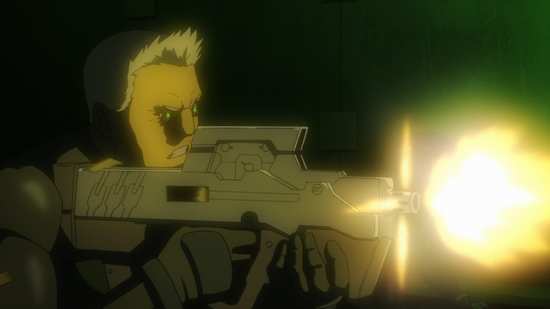
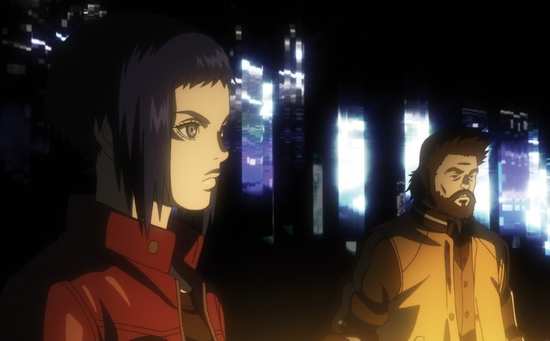
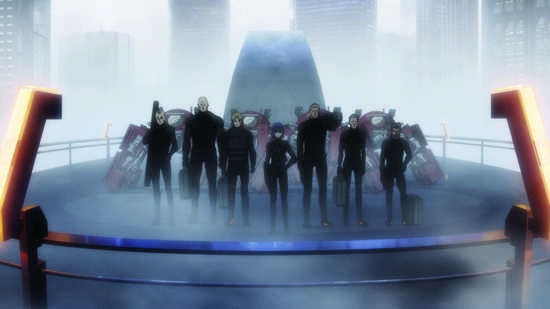
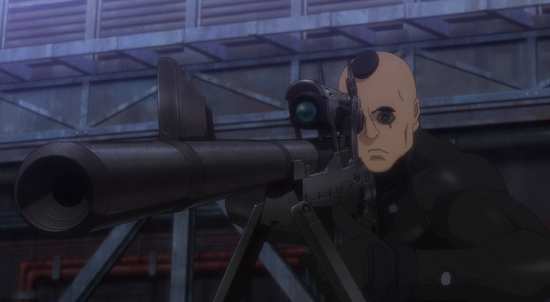
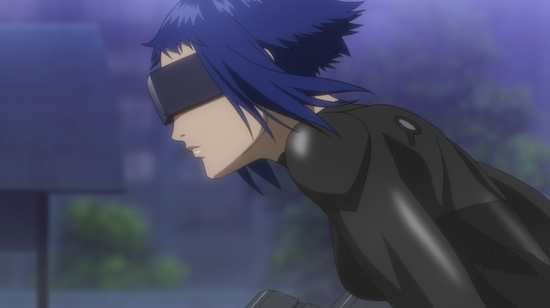
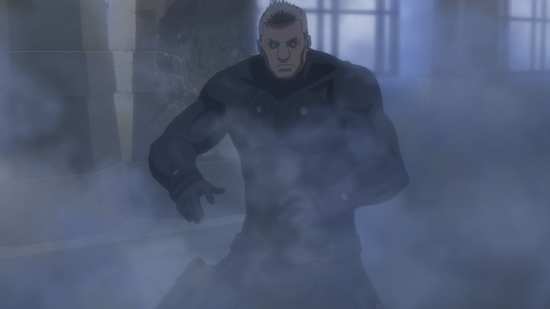
Your Opinions and Comments
Be the first to post a comment!